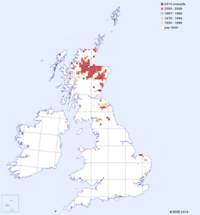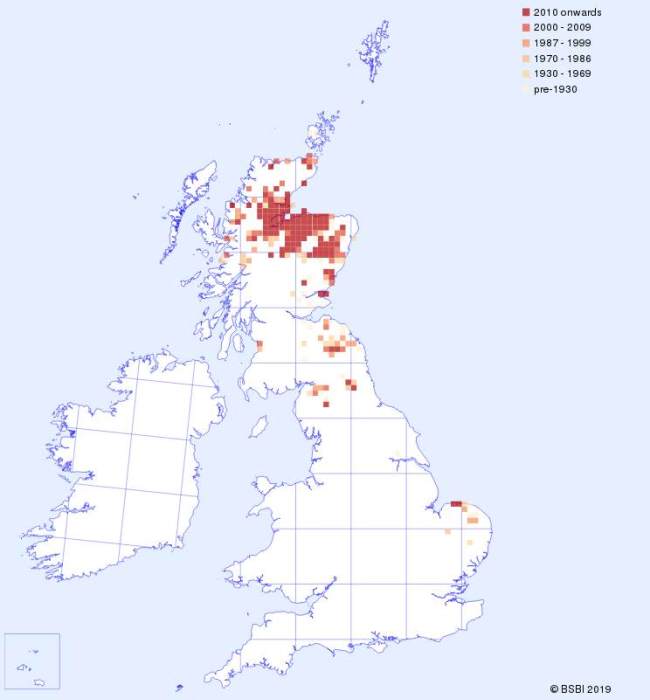Creeping Lady's-tresses grows mainly in native pine woodlands in the northern part of England and into Scotland, but there are also a few colonies in old pine plantations in Norfolk. The tiny spikes of densely hairy white flowers are distinctive, and although they are broadly similar to Autumn Lady's-tresses the two species do not appear in the same habitat. Classified as Nationally Scarce, this orchid can nevertheless be abundant in some pine woodland locations in Scotland, whilst in other places the plant is becoming rarer and has disappeared altogether from some sites. Creeping Lady's-tresses flowers from late June to late August, peaking in mid-July. On mainland Europe, this plant occurs from Scandinavia in the north to Italy and Greece in the south.
| Distribution Map | Key Features | |
 |
Records for Creeping Lady's-tresses from BSBI are shown on the map with most recent in front. (Hover the mouse over the small map to expand it.) |
Plant: 7 to 20cm in height; stem pale green, ridged and densely hairy towards the tip. |
Image Gallery for Creeping Lady's-tresses Goodyera repens
| Pollination | Taxonomy & Hybrids |
The flowers are pollinated by bumblebees and other bees, which are rewarded with nectar. |
The specific name repens means creeping. |
Articles about Autumn Lady's-tresses in JHOS
